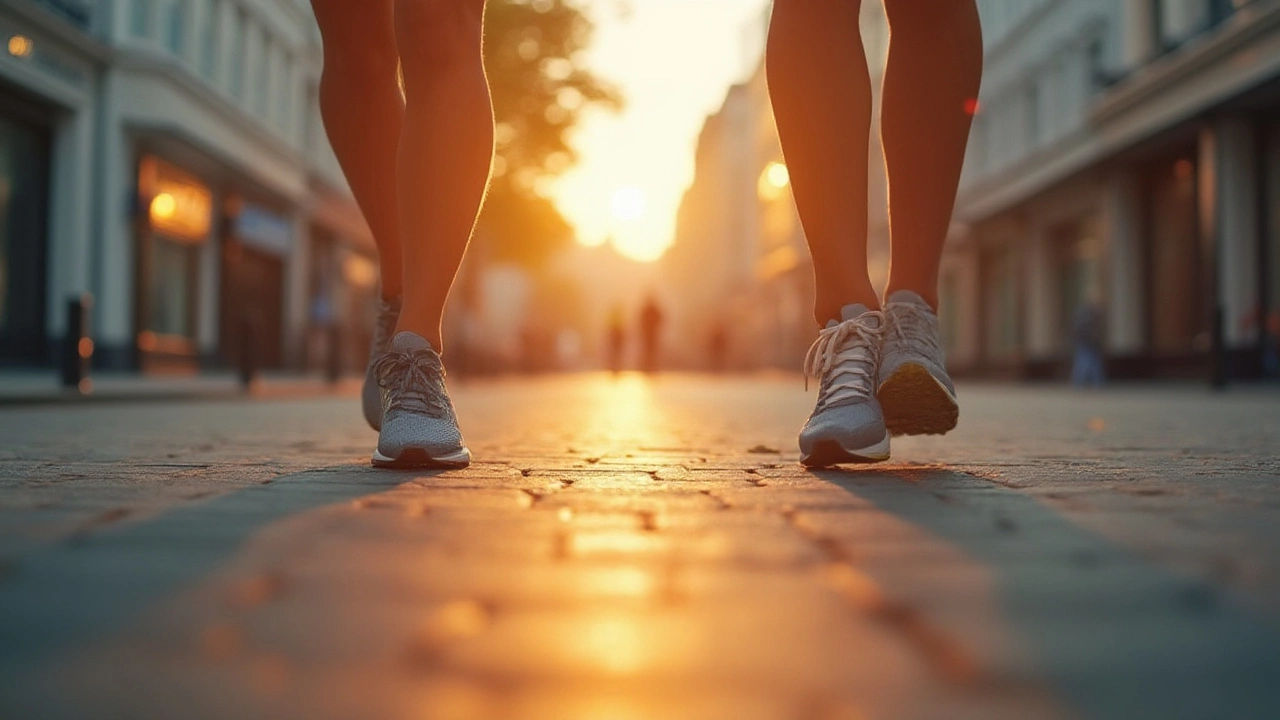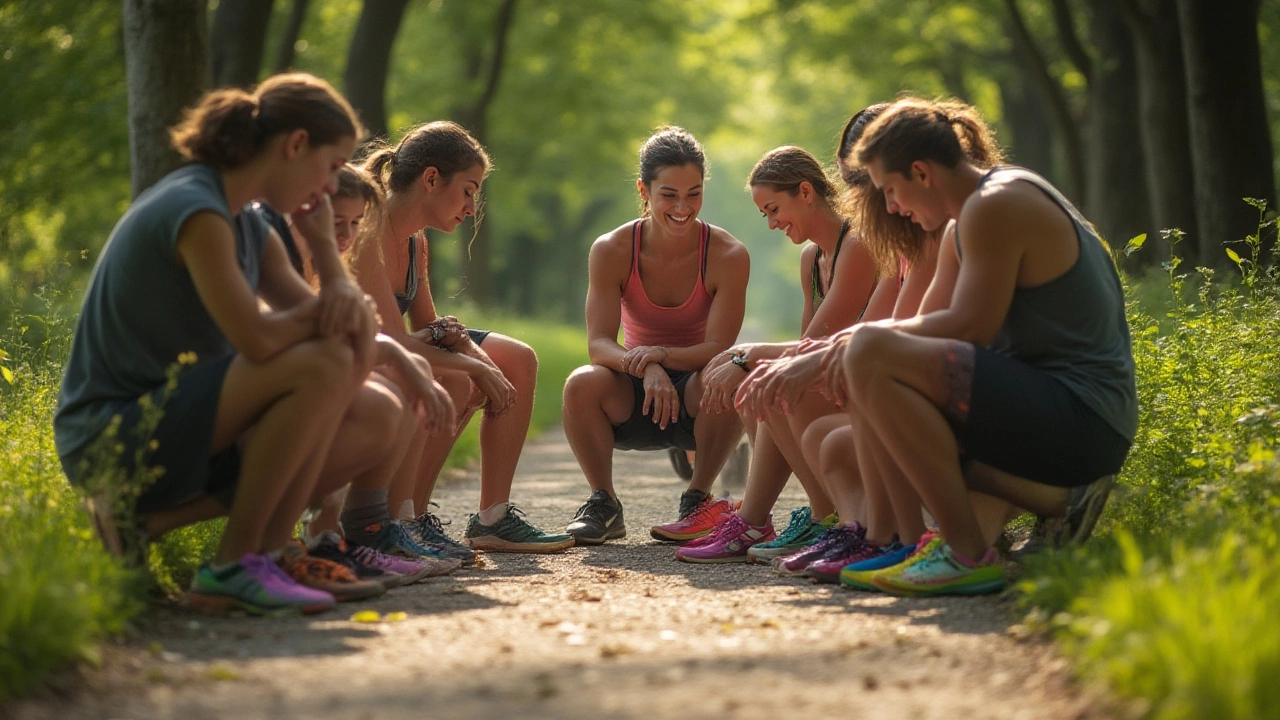Running Shoes Fit: Should They Be Tight or Loose for Best Performance?

Imagine putting on your favourite new running shoes, lacing up tight, and heading out—only to feel a sharp pinch on your toe with every step. Next day, you try going a size up, and suddenly your foot’s sliding about like you’re on an ice rink. It’s strange how such a small difference makes things feel completely off. So what’s actually better for running—tight or loose shoes? You’d be surprised at the science, the stats, and even the sneaky risks you might be taking right now just by choosing the wrong fit.
What Happens When Your Running Shoes Are Too Tight?
First things first: everyone’s seen someone limping in new shoes. But tight running shoes are more than just an uncomfortable nuisance—they can actually mess up your whole run and even your long-term health. The most obvious sign? That “pins and needles” numbness spreading into your toes, making every stride uncomfortable. That's not just your feet complaining! If your shoes press too hard on the nerves—especially around the ball of your foot or under the laces—you’re risking more than red marks.
Let’s talk friction. With tight shoes, you’re more likely to develop blisters, as constant rubbing leads to hot spots and broken skin. Some runners end up with bruised or even blackened toenails, which are never fun. There's also something called Morton’s neuroma, a thickening of a nerve in your foot due to ongoing pressure (often caused by cramped footwear), which could mean pain between your toes—from something as simple as a snug trainer.
Tight shoes restrict blood flow. Runners need good circulation for their feet to stay cool and recover quickly. When shoes squeeze too much, your foot doesn’t have space to expand, especially as it swells during a long run. Doctors in the UK have linked this to an increased risk of stress fractures, as cramped toes and restricted movement force the body to absorb impact less efficiently.
Here's a fact: a 2022 analysis from the British Journal of Sports Medicine found that runners with ill-fitting, overly-tight shoes were nearly 2.5 times more likely to report foot pain during training cycles. That's more than just bad luck—it’s a fit problem. So if you're dealing with numbness, tingling, or little toe injuries after every run, it's time to double-check your sizing.
The Perils of Loose Running Shoes Nobody Talks About
You’d think loose shoes would be the answer. More room, less squished toes—easy! But runners who go too big discover a whole different set of problems. The annoying feeling of your heel sliding out with every step isn’t just uncomfortable; it can change the way you run completely.
Loose shoes mean your foot shifts inside the shoe with every stride. That’s a recipe for blisters: the constant sliding rubs your skin raw, especially around your arches and behind your heel. Even worse, your stability suffers. A too-roomy fit makes it harder to land cleanly, which increases your risk of ankle rolls. There’s research from a 2021 University of Exeter study showing that in trail runners, shoes that are too loose resulted in almost 40% more ankle twists compared to snug-fitted ones.
Another issue is energy loss. With loose shoes, your running efficiency drops. You're wasting energy adjusting your foot position in the shoe with every stride, instead of powering forward. That can quickly turn a 5K into a sluggish struggle. The midsole—the shoe’s cushioned core—doesn’t line up correctly under your foot if the shoe’s too big, so you miss out on essential support and shock absorption.
Ever seen laces undone mid-run? It happens way more with loose shoes. When you have to tie them super tight just to keep your foot in place, you’re actually creating new pressure points and sometimes cutting off circulation, ironically ending up with the same side-effects as shoes that are too tight—just in a sneakier way.

Shoe Sizing—Why a Perfect Fit Matters in Running
The whole problem is that “perfect fit” is way more complicated than it sounds. Shoe sizes aren’t the same everywhere. A UK size 8 in one brand could be a dramatically different shape and length than a size 8 in another. In fact, Runner’s World magazine did a grid comparison in 2024 showing full 1cm differences in the same marked size across popular brands! And, running in hot weather or for long periods? Your feet can swell up to a full shoe size.
But here’s the golden rule: running shoes should fit snug everywhere but never tight, with enough space—about a thumb’s width—between your longest toe and the end of the shoe. Your heel should feel gently locked in with no slipping, and your toes should be able to wiggle easily. Sizing up just for extra “room” isn’t a good idea. A 2023 survey by RunRepeat in the UK showed that people who bought shoes more than a half size too big or too small reported foot pain during races more than those with “true to size” fits by a margin of 20%.
Width matters too! Narrow shoes can crowd your forefoot, wide ones can let you slide around. Most running brands now offer multiple width options—if you have wide feet, try looking for their “Wide” or “2E” fit. Flat or high-arched feet need different styles and footbeds for support, so a shop with proper gait analysis can help pinpoint your needs.
Here’s a handy table to show what runners most often experience with shoes that don't fit right vs when they hit the sizing sweet spot:
| Shoe Fit | Common Issues | Performance Impact |
|---|---|---|
| Too Tight | Blisters, numb toes, blackened nails, nerve pain | Poor blood flow, reduced comfort, injury risk |
| Too Loose | Heel slip, blisters, unstable footing, lace problems | Loss of energy, higher risk of ankle rolls |
| Just Right | No pain, no sliding, room for foot to swell | Max comfort, better energy return, safest run |
Expert Tips for Choosing Your Best-Fitting Running Shoes
It can feel overwhelming staring at a wall of options, but a few simple tips make shoe shopping easy. First: shop later in the day or after a short run, when your feet are slightly swollen. This mimics the way your feet will feel mid-run, so you’ll get a truer fit.
Wear your usual running socks to the shop—cushioning can change things a lot. Always stand and walk around; don’t just slip them on while seated. If you can, jog a few steps. Your heel shouldn't slide, and your toes shouldn’t graze the end. Proper fit means your feet should feel hugged—not squished or floating inside.
If you do your shopping online, measure your feet properly: stand on a sheet of paper, mark the end of your longest toe and your heel, and check that against brand-specific sizing charts. Forget about your usual dress shoe size—focus on your foot length in centimeters or inches for more accuracy. Remember to check the shoe’s width offerings. Certain brands (like New Balance and Brooks) famously make shoes in multiple widths, which makes all the difference for people with wide or narrow feet.
- Try on several sizes—even half sizes.
- Try shoes on both feet. Most people have one foot that’s slightly larger!
- Test how your toes move—there should be easy wiggle room, but no flopping around.
- Check for proper heel grip—no slipping with each step, but not pinched.
- Talk to running shop staff to get insight on new brands or updates in fit.
Zero-drop shoes or minimalist styles? Always give your feet time to adapt, as the fit and support are very different from traditional trainers. If you feel any discomfort or strange sensations in your feet after buying new shoes, take them back! Most UK shops allow for exchanges if the shoes are barely worn and your receipt’s ready.

The Sweet Spot—Getting Your Shoe Fit Just Right
There’s no single answer for everyone, but some simple truths stand out. Your best running shoes won’t be so tight you dread lacing them up, nor so loose that your foot slides about inside. Shoes that land in that “snug-but-not-tight” middle ground work for nearly every runner, regardless of foot type or distance.
Your foot needs space to move, flex, and grow through a run, especially longer ones or on warm days. But structure matters too—a secure hug around your midfoot and heel gives you stability with every push-off. Good running shops in the UK (especially ones in running hubs like Bristol or Cardiff) nearly always recommend testing your shoes over a short jog before you commit. That’s because motion reveals fit issues you’ll never spot just pacing the shop aisle.
Pay attention to little things: a hot spot or tightness after five minutes will only get worse at kilometre 10. If a shoe is too stiff or pinches on day one, it won’t magically get better after “breaking in”—modern running shoes are designed to feel good straight away. If you lace up and feel only comfort, security, and the urge to get out running, you're almost always in the sweet spot.
In the end, your feet are as unique as your fingerprint. There’s no right shortcut—try different fits, trust how your feet feel, and never settle for pain. The right running shoes won’t just improve your running—they’ll help you enjoy every step along the way. The debate between tight and loose? Now you know the real answer: aim for *just right*—that perfect in-between where you barely notice your shoes at all.
